Remember when Sunday dinner meant your best behavior and Mom’s good china? The 1970s dining room was a carefully curated space that said everything about a family’s aspirations, style, and social standing. Whether you grew up in a split-level ranch or a cozy Cape Cod, chances are your childhood dining room featured at least half of these iconic touches that made every meal feel like a special occasion.
1. The Plastic Tablecloth That Looked Like Lace
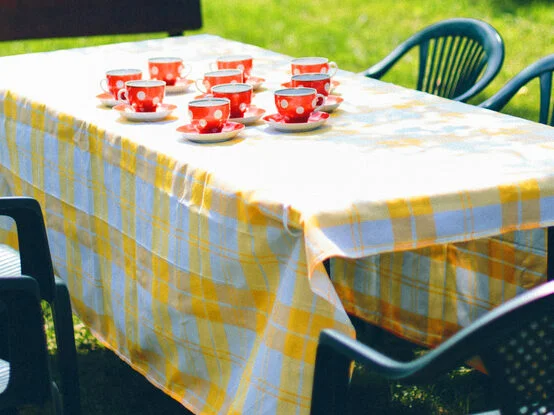
Nothing said “company’s coming” quite like Mom breaking out the plastic tablecloth with the elaborate lace pattern printed right on it. These miraculous inventions promised all the elegance of real lace without the hassle of washing and ironing delicate fabric. You could spill grape juice on it, wipe it clean with a damp cloth, and it looked good as new for the next dinner party.
The clear plastic version was especially popular because it showed off the beautiful wood grain of your dining table underneath. It crinkled just slightly when you set down your water glass, making that distinctive sound that meant you were eating somewhere special. Every suburban housewife had at least two – one for everyday “fancy” meals and another extra-special one reserved for holidays and when the in-laws visited.
2. Harvest Gold or Avocado Green Everything
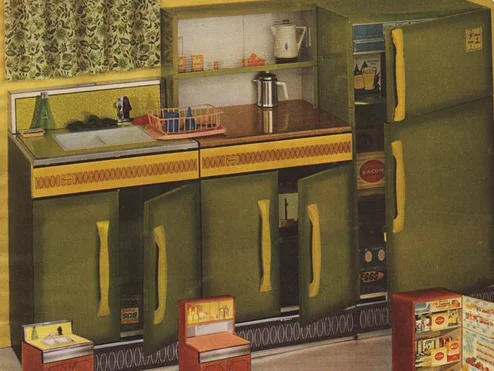
If your dining room wasn’t decorated in harvest gold, it was definitely avocado green – there was no middle ground in the ’70s color palette. These earthy tones were supposed to bring the outdoors inside and create a warm, welcoming atmosphere for family gatherings. From the vinyl chair cushions to the ceramic serving dishes, everything coordinated in these rich, saturated hues.
The beauty of committing to a color scheme was that everything matched, even if you bought pieces years apart. Manufacturers seemed to have a secret agreement to keep producing the exact same shades of gold and green throughout the entire decade. Your dining room looked perfectly put-together, even if you furnished it one piece at a time from different stores across town.
3. The Formal China Cabinet with Good Dishes You Never Used
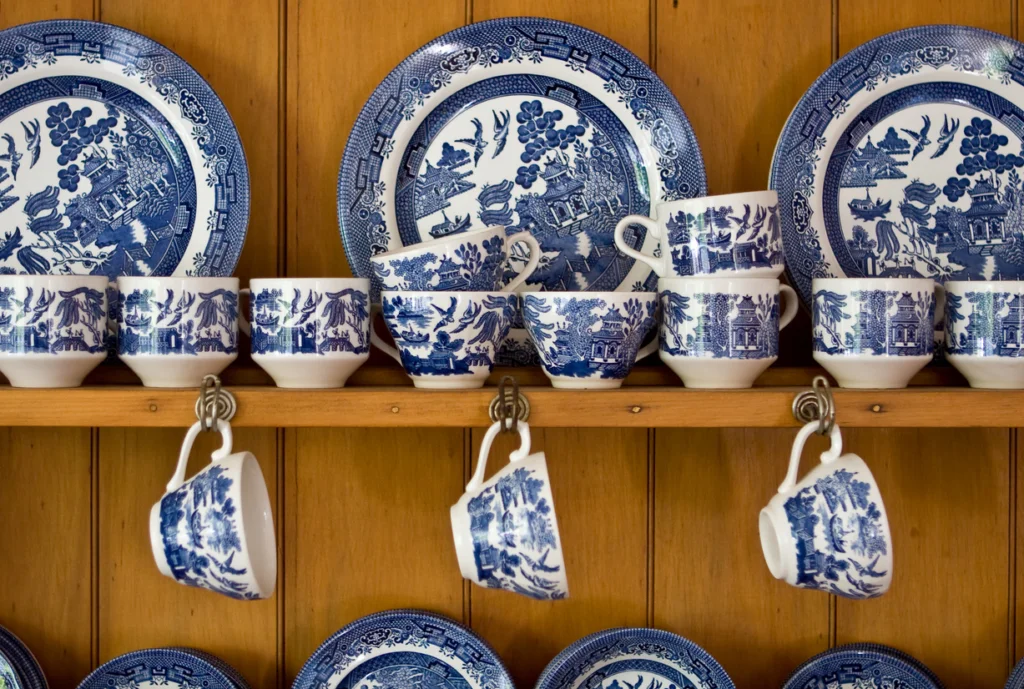
Every proper dining room had a china cabinet displaying the “good dishes” that came out maybe twice a year. These glass-fronted showcases were like museums for your most precious tableware – the wedding china, the Christmas dishes, and maybe a special set inherited from Grandma. The cabinet itself was usually a substantial piece of furniture, often matching the dining table, with interior lights that made everything sparkle.
Inside, each piece had its designated spot, arranged just so to show off the beautiful patterns and gold trim. Mom dusted these dishes regularly even though they rarely saw actual food, because keeping them pristine was a point of pride. The everyday dishes lived in the kitchen cabinets, but the good china lived in the dining room where everyone could admire it through the glass doors.
4. Macramé Plant Hangers with Trailing Greenery
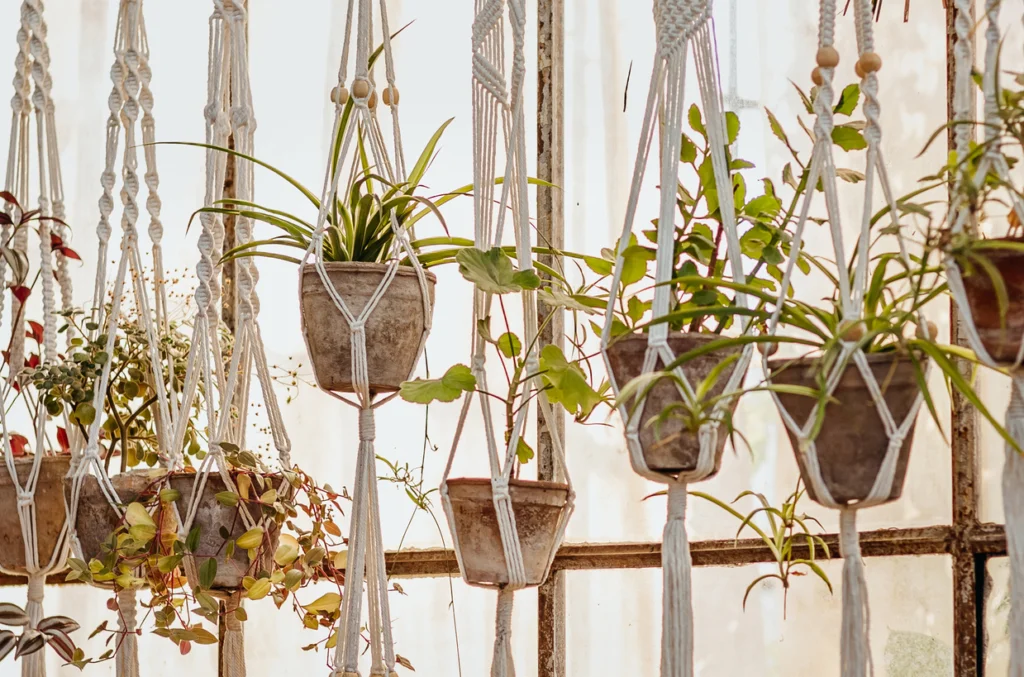
No ’70s dining room was complete without at least one macramé plant hanger suspending a lush spider plant or trailing pothos from the ceiling. These intricate rope creations were often handmade – either by the homeowner herself or purchased from a craft fair or church bazaar. The plants added life and color to the room while showing off your domestic skills and attention to natural beauty.
The hanging plants were strategically placed to catch the light from the dining room window, creating lovely shadows and a sense of living, breathing decoration. Watering them required a step stool and careful maneuvering to avoid dripping on the good furniture below. Everyone knew someone who could whip up a macramé hanger in an evening, and the more complex the knot pattern, the more impressive your decorating credentials.
5. Wall-to-Wall Shag Carpeting
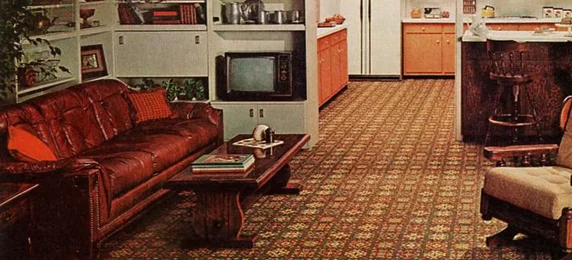
Shag carpeting in the dining room was the height of luxury and sophistication, even if it made cleaning up dropped food a nightmare. The deep, plush pile felt wonderful under bare feet and added warmth and sound absorption to the room. Popular colors included deep chocolate brown, burnt orange, or rich burgundy – colors that could hide stains but showed every piece of lint or pet hair.
Maintaining shag carpet required special tools, including a shag rake to keep the fibers standing upright and looking their best. Dinner parties often ended with Mom on her hands and knees, picking crumbs out of the deep pile with her fingers. Despite the maintenance challenges, nothing said “we’ve made it” quite like wall-to-wall shag carpeting throughout the house.
6. The Formal Dining Set with Six Matching Chairs
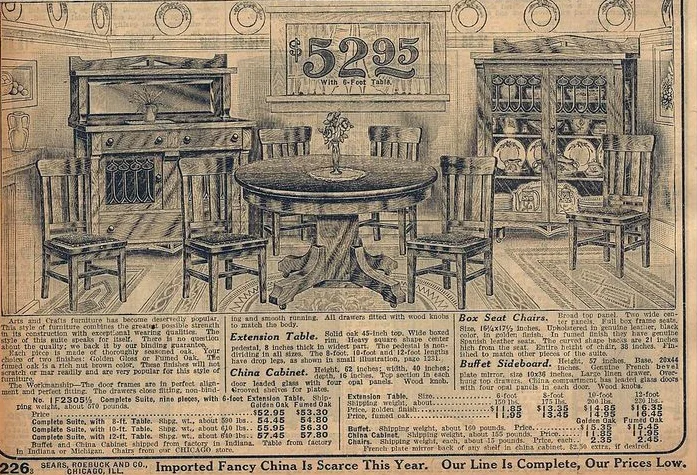
The dining room set was often the most expensive furniture purchase a young couple made, carefully selected to last for decades of family meals and entertaining. These sets typically included a substantial table with extension leaves and six matching chairs – four side chairs and two with arms for the heads of the table. The wood was usually dark walnut or rich cherry, polished to a high shine that reflected the overhead light fixture.
Protecting this investment meant using placemats, coasters, and those plastic tablecloths religiously to prevent water rings, scratches, and heat damage. The chairs were often reupholstered once or twice over the years, but the basic set remained the same throughout your childhood. Sunday dinners meant everyone gathered around this table, with assigned seats that rarely changed and conversations that shaped your understanding of family dynamics.
7. A Chandelier or Swag Lamp as the Centerpiece
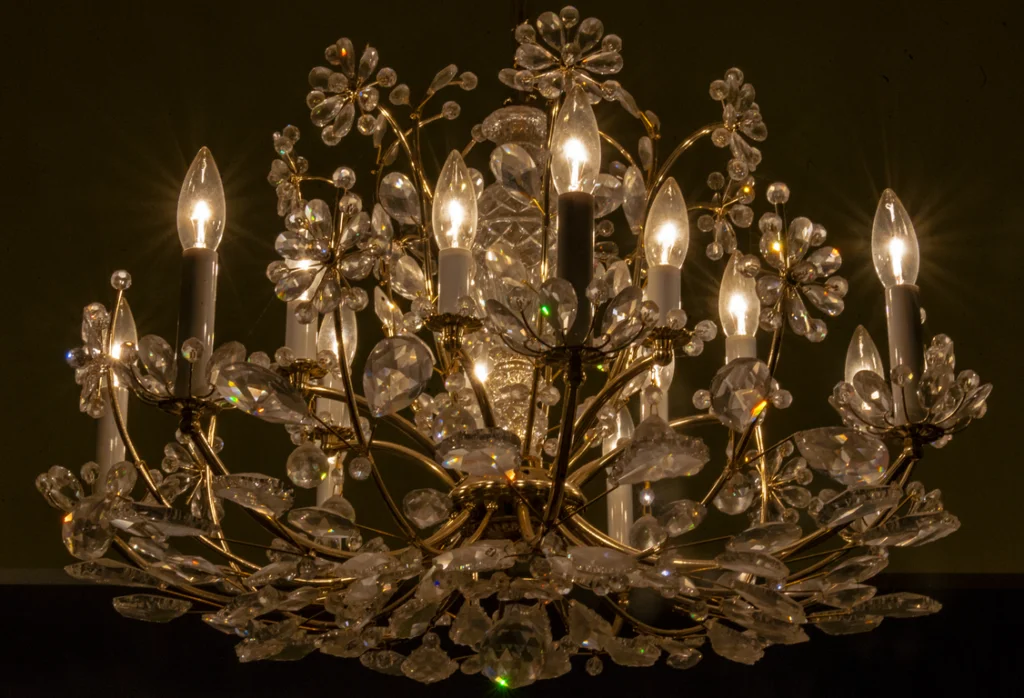
Overhead lighting in the ’70s dining room was never just functional – it was a statement piece that set the mood for every meal. Crystal chandeliers were the gold standard, but swag lamps with their long, draped cords were a popular and more affordable alternative. These fixtures often featured colorful glass shades, beaded trim, or macramé accents that coordinated with the room’s overall décor scheme.
The dimmer switch was revolutionary technology that let you adjust the lighting for different occasions – bright for homework at the dining table, dim and romantic for dinner parties. Many families had a ritual of someone being designated the “light person” who was responsible for getting just the right ambiance before guests arrived. The fixture itself became a conversation starter, especially if it featured unusual materials like capiz shells or hand-blown glass.
8. Ceramic or Wooden Lazy Susans
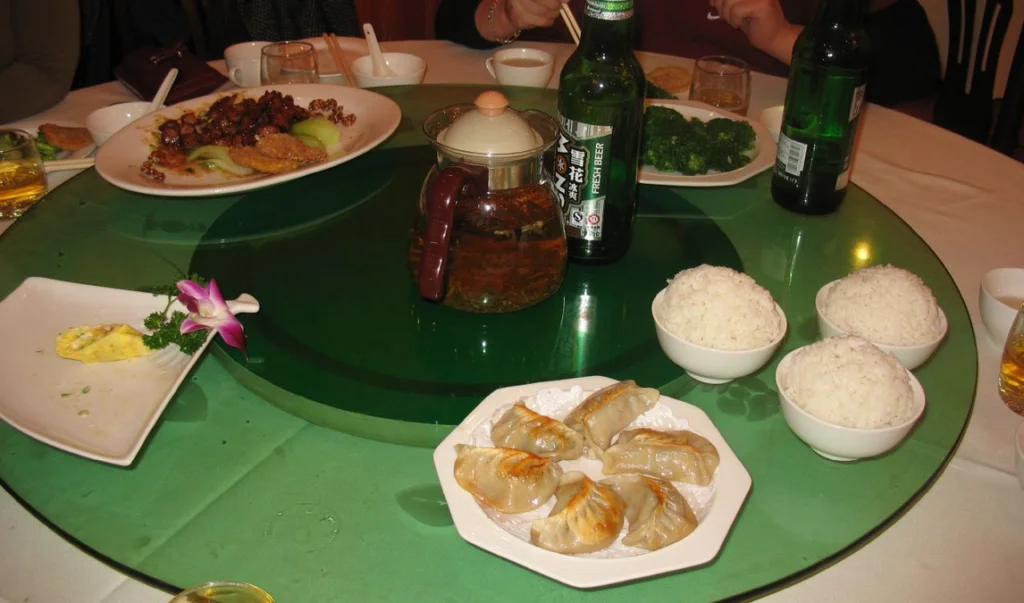
The lazy Susan was both practical and fashionable, solving the age-old problem of passing dishes around a crowded table while adding a touch of restaurant-style sophistication to family meals. These rotating serving pieces came in various materials – carved wood, ceramic with hand-painted designs, or clear glass with decorative edges. The larger ones could hold an entire meal’s worth of serving dishes, while smaller versions were perfect for condiments and sauces.
Using a lazy Susan properly was an art form that required coordination and timing to avoid collisions and spills. Kids loved spinning them (often too fast), while adults appreciated the convenience of accessing everything without having to ask for dishes to be passed. The most elaborate versions had multiple tiers, turning your dining table into an impressive display of culinary organization that made even weeknight dinners feel special.
9. Woven Placemats and Matching Napkin Rings
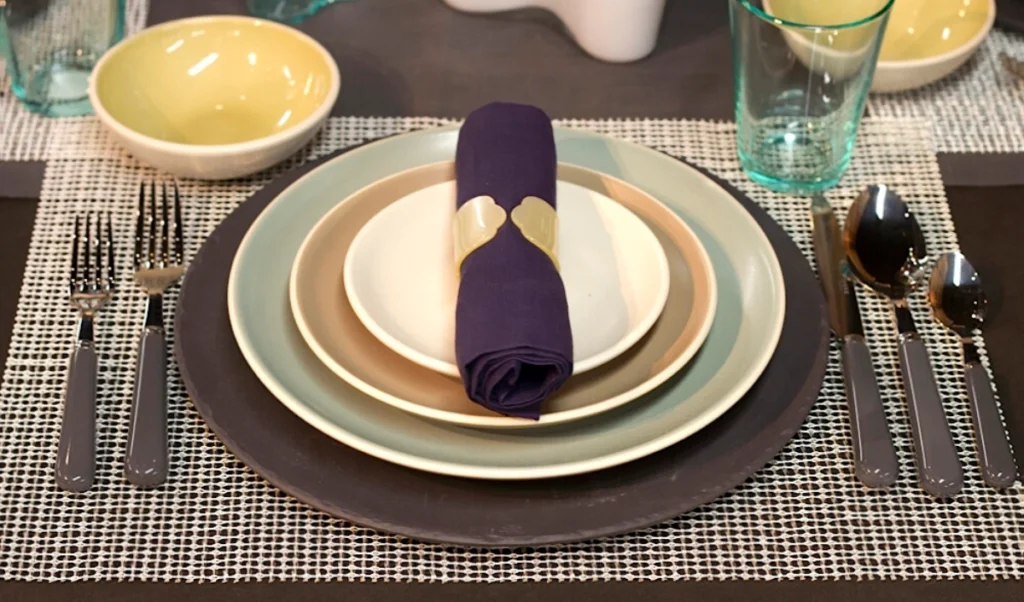
Table setting in the ’70s was serious business, and proper placemats were essential for protecting your furniture while adding color and texture to the table. Woven materials like rattan, bamboo, or colorful vinyl were popular choices that could withstand spills while looking appropriately casual-elegant. Each placemat had its matching napkin ring, often made from the same material or a complementary wood or metal.
The ritual of setting the table with these accessories turned every meal into a more formal affair, teaching children proper table manners and the importance of presentation. Different sets were rotated seasonally – autumn leaves for fall, holly patterns for Christmas, and bright florals for spring and summer. Even everyday family dinners looked more special when the table was properly set with coordinating linens and accessories.
10. A Buffet or Sideboard for Storage and Display
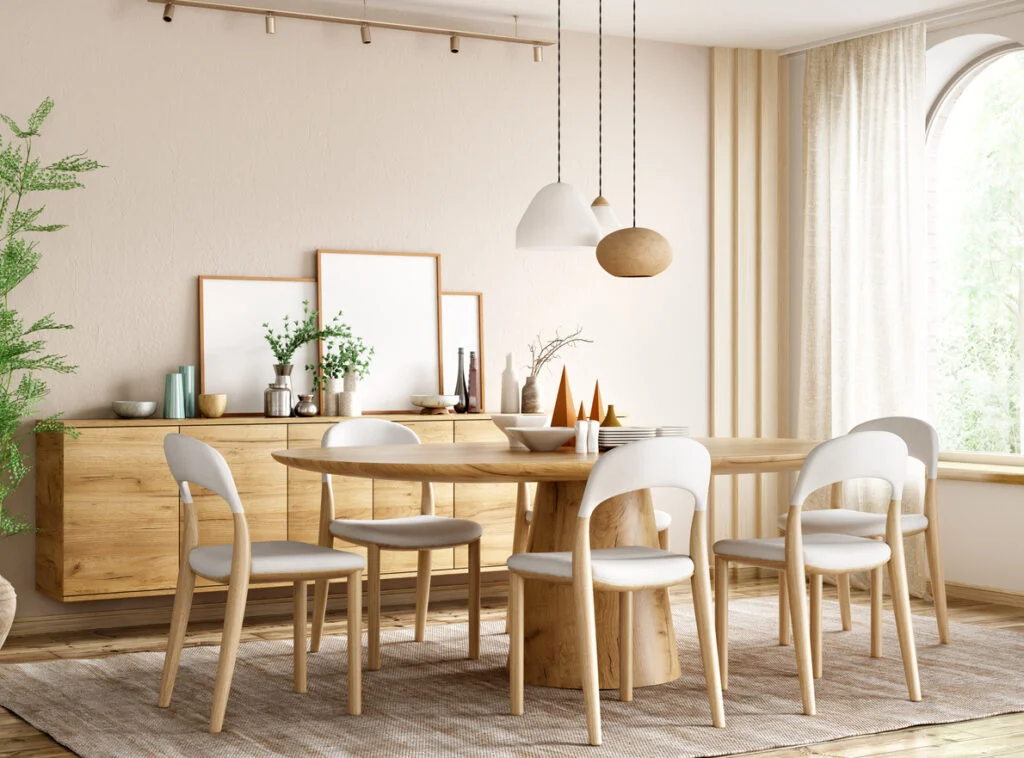
The dining room buffet served double duty as both storage for entertaining essentials and display space for decorative objects that showed off the family’s taste and travels. These low, wide pieces of furniture typically matched the dining table and chairs, creating a cohesive look throughout the room. The flat top surface was perfect for displaying a table lamp, family photos, or a decorative bowl filled with artificial fruit.
Inside the buffet’s drawers and cabinets, you’d find the good silverware, cloth napkins, serving pieces, and other items that only came out for special occasions. The buffet also served as a serving station during dinner parties, where hot dishes could be kept warm and guests could help themselves to seconds. Many families used the buffet as a bar setup for entertaining, with cocktail glasses and a small selection of liquors arranged attractively on top.
11. Wood Paneling or Flocked Wallpaper
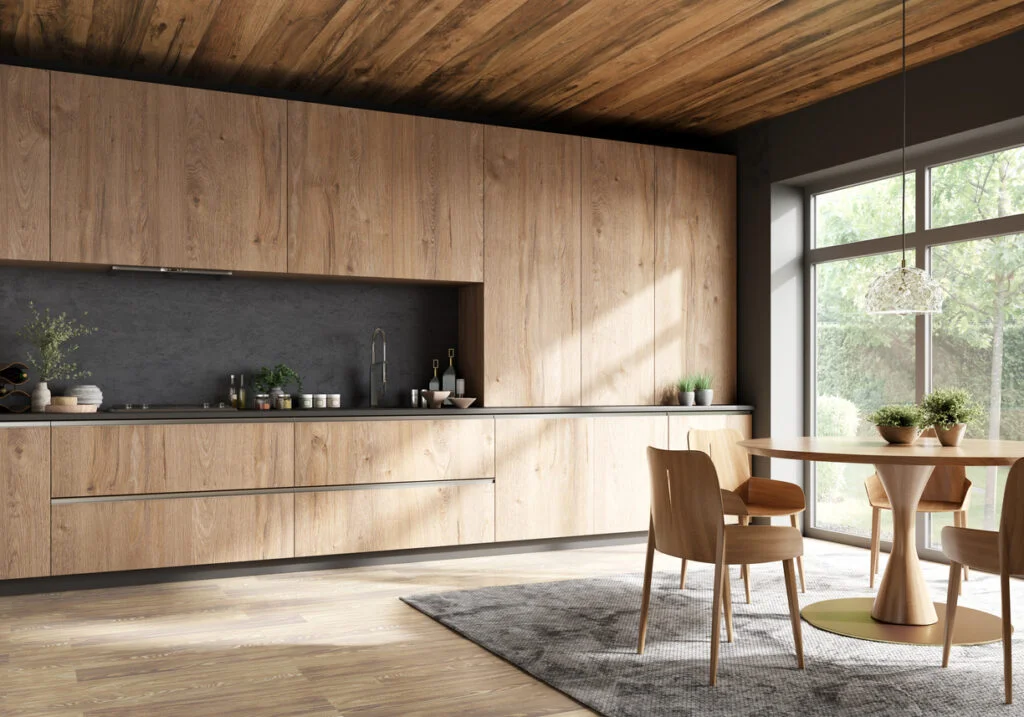
Dining room walls in the ’70s made bold statements, whether through rich wood paneling that added warmth and sophistication or dramatic flocked wallpaper with raised velvet-like patterns. Wood paneling, usually in dark walnut or cherry tones, created an intimate, club-like atmosphere that made every meal feel important. The paneling often extended only halfway up the wall, topped with a chair rail and complemented by paint or wallpaper above.
Flocked wallpaper was the more adventurous choice, featuring elaborate patterns in deep colors with raised fuzzy textures that begged to be touched. Popular designs included damask patterns, large florals, or geometric shapes that created dramatic focal points in the room. Both options required commitment – they weren’t easily changed when tastes evolved, so families lived with their choices for years, watching them become the backdrop for countless family memories.
12. Brass Accents and Candlesticks
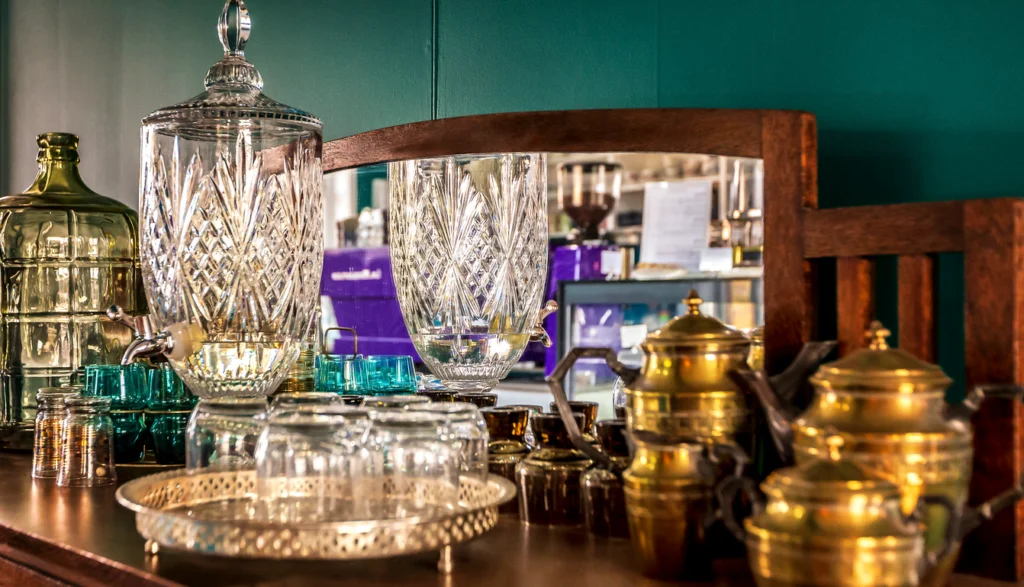
Brass was the metal of choice for ’70s dining room accessories, from candlesticks and serving trays to decorative bowls and picture frames. These golden accents added warmth and elegance to the room while requiring regular polishing to maintain their shine. Brass candlesticks were particularly popular, often displayed in pairs on the dining table or buffet, ready to create romantic ambiance at a moment’s notice.
The maintenance of brass accessories was a weekly ritual for many homeowners, using special polish and soft cloths to keep everything gleaming. Tarnished brass was considered a housekeeping failure, so these pieces received careful attention and were often the first things cleaned before company arrived. The warm glow of brass complemented the earth-tone color schemes perfectly, tying together all the other elements in the room.
Looking back, these dining room elements weren’t just about decoration – they were about creating a sense of occasion and importance around family meals. Every Sunday dinner, holiday gathering, and special celebration was enhanced by these carefully chosen details that made eating together feel like an event worth dressing up for. While our tastes may have evolved, the memory of those thoughtfully appointed dining rooms still brings a smile, reminding us of a time when sharing a meal was always a little bit special.
This story When a Plastic Tablecloth Meant You Were Fancy: 12 Dining Room Touches Everyone Had in the ’70s was first published on Takes Me Back.


